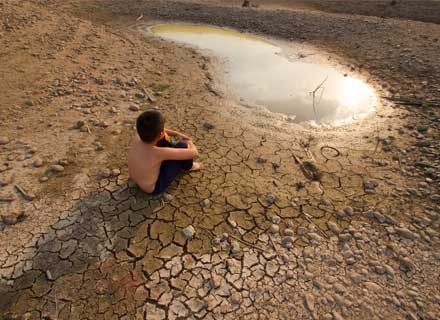For the first time since the hyperinflation of the early 1990s, Argentina’s inflation rate has exceeded 100%.
According to the nation’s statistics office, inflation reached 102.5% in February 2023, which means that the cost of numerous consumer goods has increased significantly since 2022.
Argentina is known for its population’s long battle with economic hardships. The government too has capped the price of food and other necessary goods.
However, the most notable recent increase was in the food and beverage brackets, where prices rose by 9.8% in February 2023 over January.
According to Argentine media, this surge may be partially attributable to a dramatic increase in meat prices, which increased by about 20% monthly. A protracted heatwave and drought have added more pain to the ongoing crisis.
Although the symbolism of the inflation rate exceeding 100% is remarkable, such hardships are not new for Argentina.
In response to the increase in consumer prices, Argentina’s central bank announced in February 2023 that a new 2,000-peso (£8.13; $9.9) notes would be issued. In September 2022, demonstrators flocked to the streets to demand measures to combat the cost of living crisis.
Political conflicts have hindered long-standing efforts by the Argentinian government to control inflation.
As the nation’s economic crisis worsened last summer, three economy ministers were replaced within four weeks. President Alberto Fernández and his deputy, Cristina Fernández de Kirchner, reportedly disagree on addressing Argentina’s economic issues.
The International Monetary Fund (IMF) granted an additional USD 6 billion (£4.9 billion) in bailout funds in December 2022. It was the most recent payment to Argentina in a 30-month scheme with a USD 44 billion anticipated final payoff.
Why Is This Happening?
Nobel Prize-winning economist Simon Smith Kuznets once said, “There are four kinds of countries in the world: developed countries, undeveloped countries, Japan, and Argentina.”
Economists call it the ‘Argentine Paradox’. The country was set to be the world’s economic powerhouse during the first three decades of the 20th century. Argentina outpaced Australia and Canada in population, gross national product, and per capita till the 1930s. As a result, Argentina was nearly as wealthy per capita as the United States by 1913, as it was ranked among the ten most prosperous states in the world.
After the Great Depression of 1929, the country’s economy faltered, most notably due to a military junta overthrowing a 70-year-old constitutional democracy.
Since then, Argentina has seen periods of recovery and bust, defaulting nine times, with the most recent one happening in 2020. Argentines now believe they could be returning to a period of hyperinflation that plagued their country in the 1990s.
There are several reasons for the current economic disaster in Argentina, including unmanageable debt, the Ukraine war in Ukraine, and unprecedented drought.
It is worth noting that Argentina has a history of debt defaults and restructuring. In 2020, the country reached an agreement with its creditors to restructure USD 65 billion of debt, which provided some relief for the struggling economy.
However, the country’s external debt remains significant, and the government faces ongoing challenges in managing its debt obligations while promoting economic growth and stability.
Also, at the 2023 G20 conference in Bengaluru, India, Argentina’s Finance Minister Sergio Massa demanded that the International Monetary Fund (IMF) alter its surcharge policy, calling Argentina and other nations an “economic victim” of the Ukraine war.
The war in Ukraine had financial implications for Argentina; in 2022, energy subsidies were AR$1.79 billion, an increase of AR$587,934 million from 2021.
Imports of energy as a whole increased from 2021. Total fuel imports would have been USD 9.03 billion if prices were the same as in 2022. However, the report’s forecasts put them at USD 13.27 billion, a USD 4.24 increase in imports, and a rise in the nation’s needed foreign reserves, a valuable resource.
The war had also increased grain prices which would have been a great asset to the country’s agricultural economy if not for the worst drought experienced by it in the last 60 years.
This unprecedented natural phenomenon has decimated Argentina’s crops, escalating the country’s economic crisis, crushing farmers throughout the Pampas, escalating default fears, and jeopardising targets the International Monetary Fund (IMF) set.
Argentina ranks third in corn and first in processed soybean exports globally. However, the drought has drastically reduced these harvests, thereby putting farmers and the economy at terrible peril.
The nation is negotiating with the International Monetary Fund and is trying to recover. However, its citizens are tired of weak leadership that cannot curb runaway inflation.
Prices have skyrocketed, which has hurt wages and purchasing power, increased poverty to almost 40%, and hurt the governing Peronist coalition’s popularity as general elections draw closer. If the government cannot bring short-term relief and structural changes to the struggling nation soon, Argentina too, may go the Sri Lankan way.


